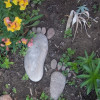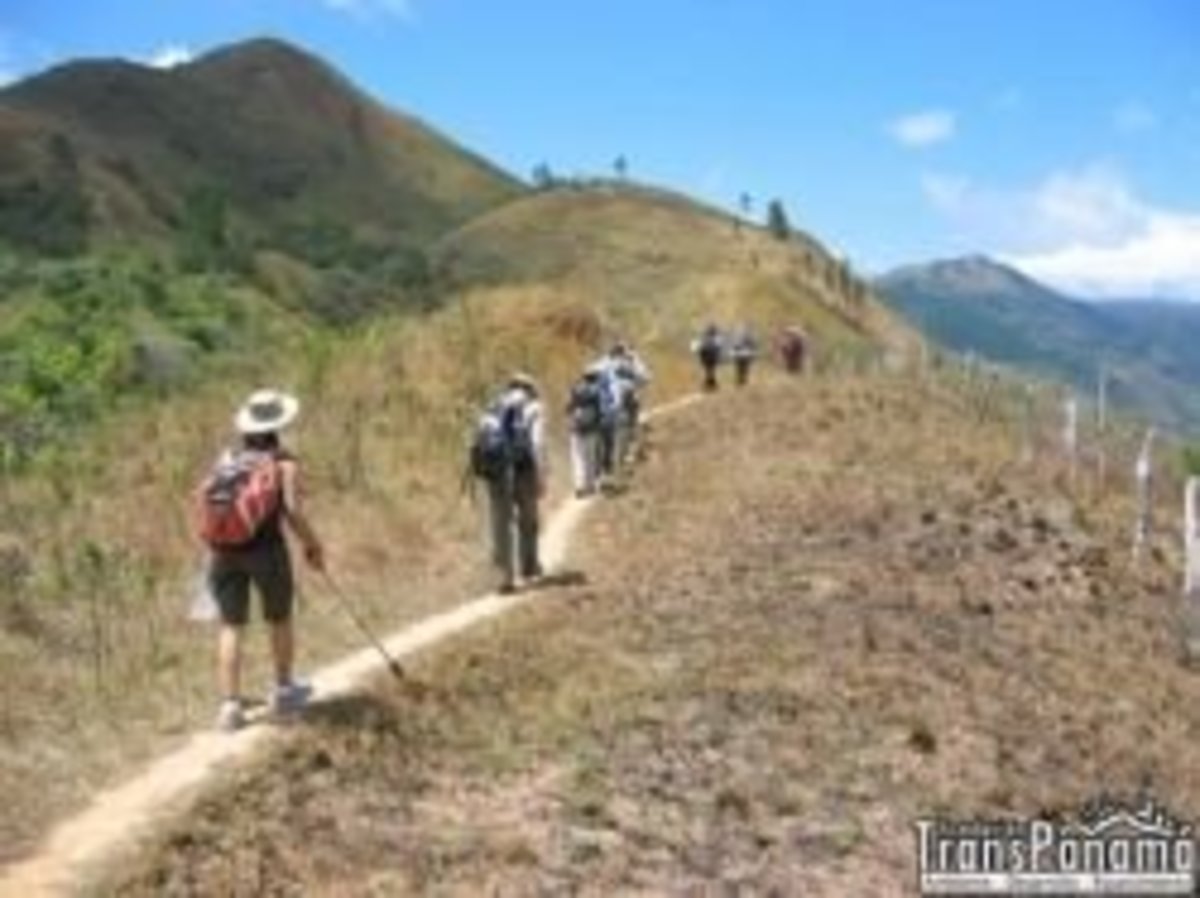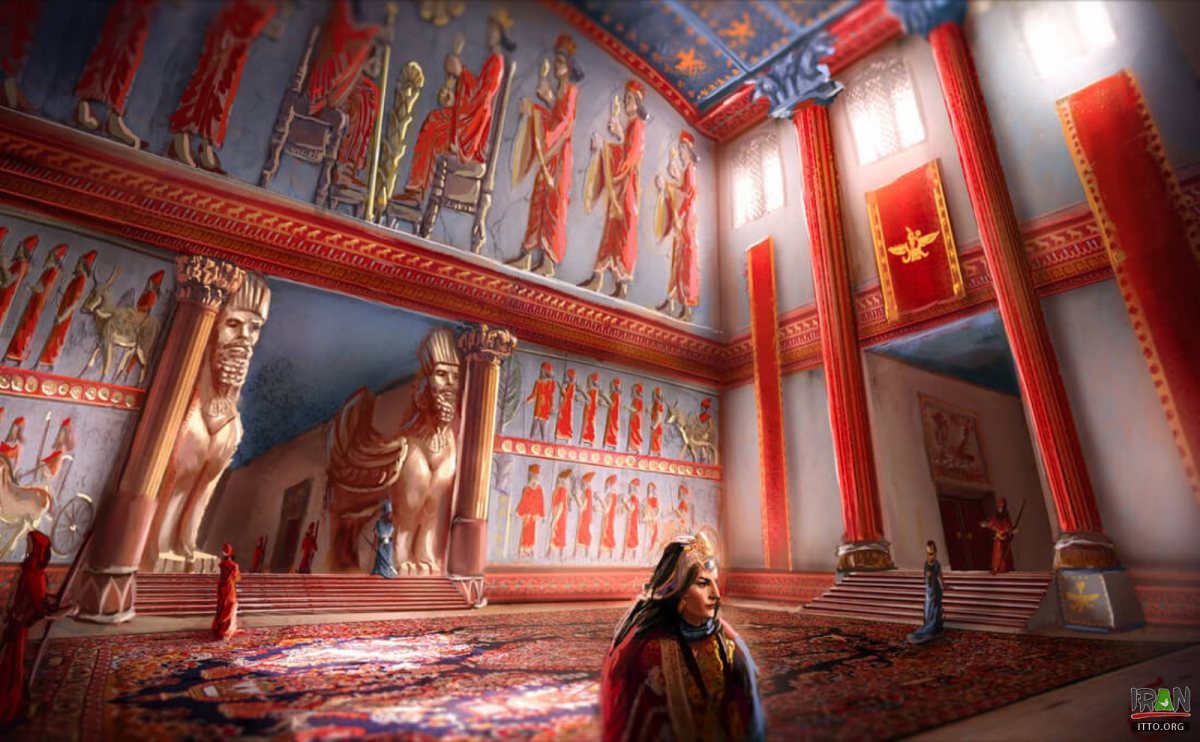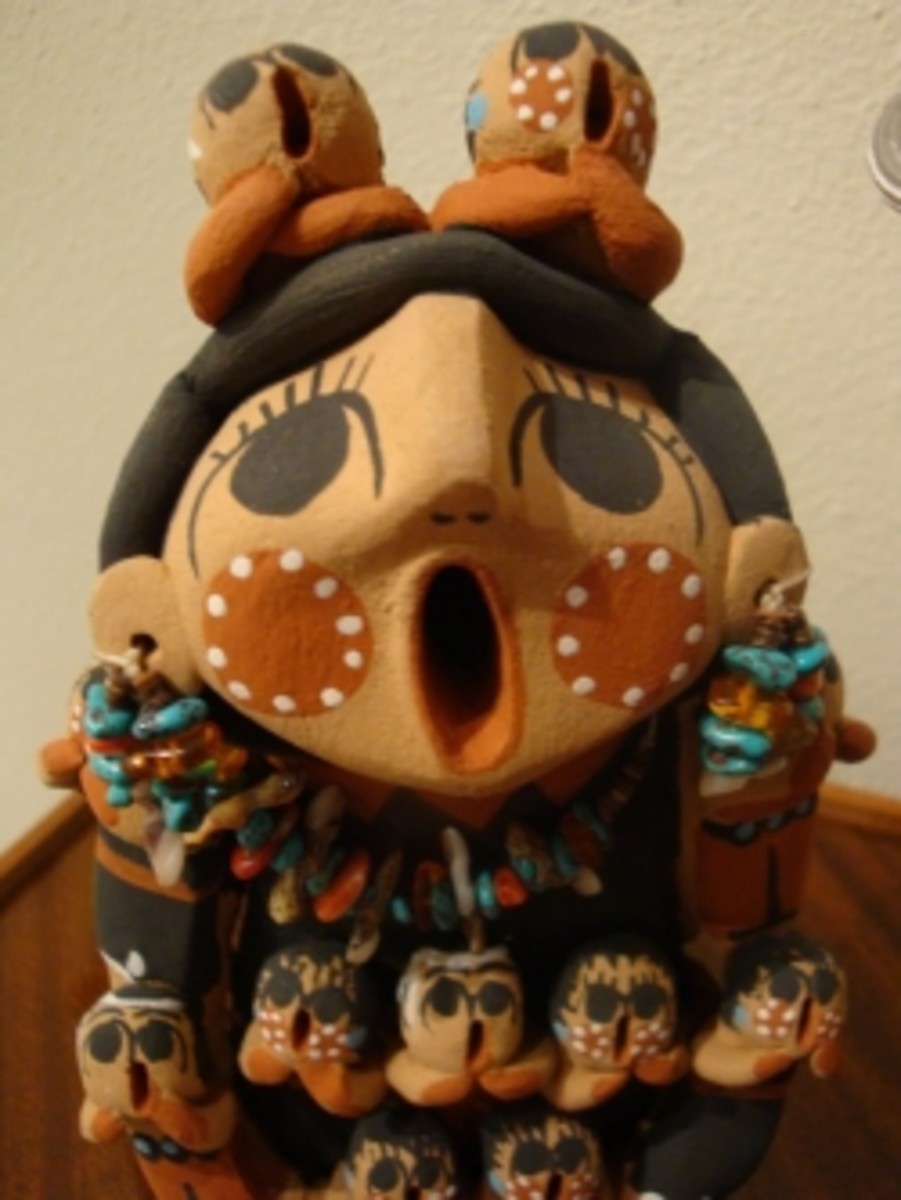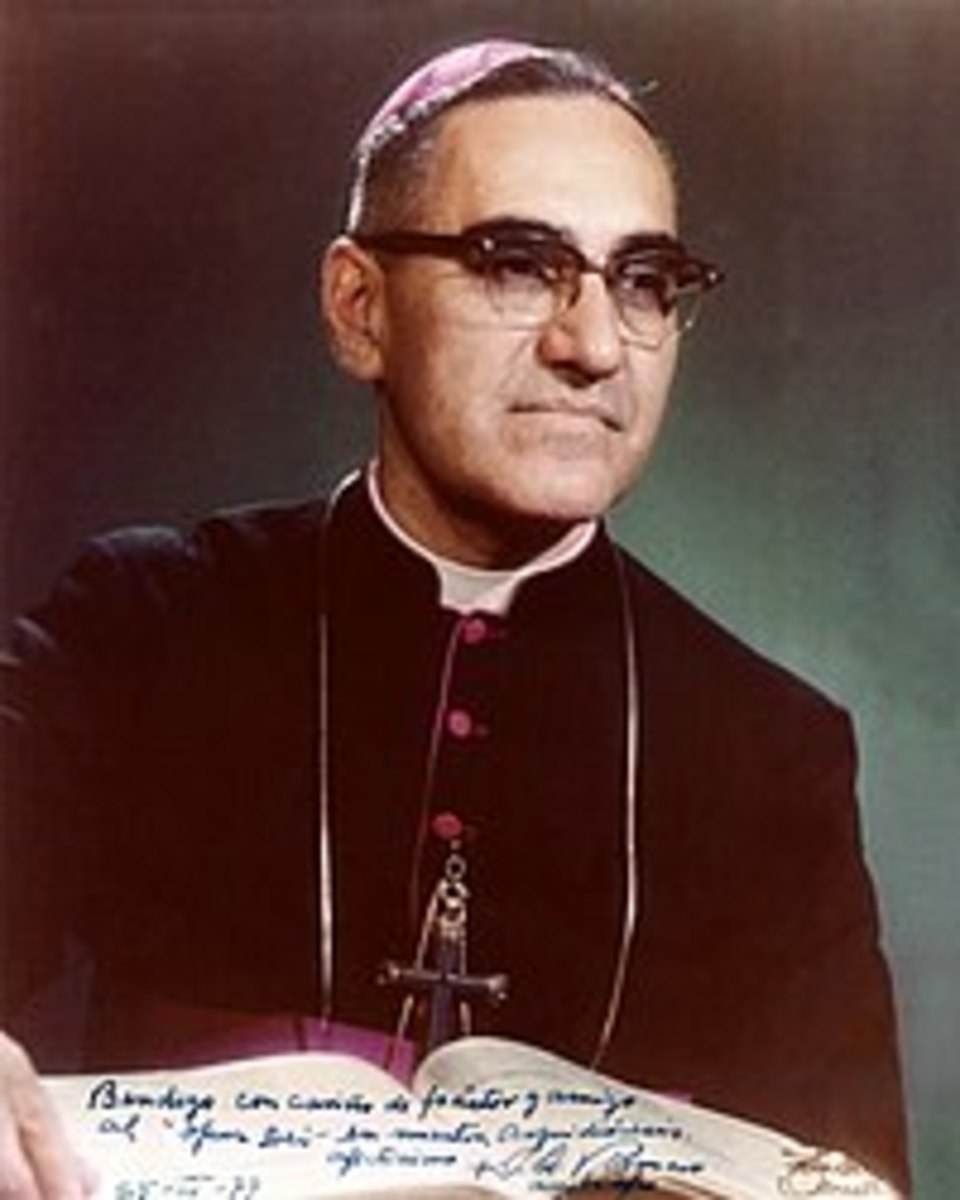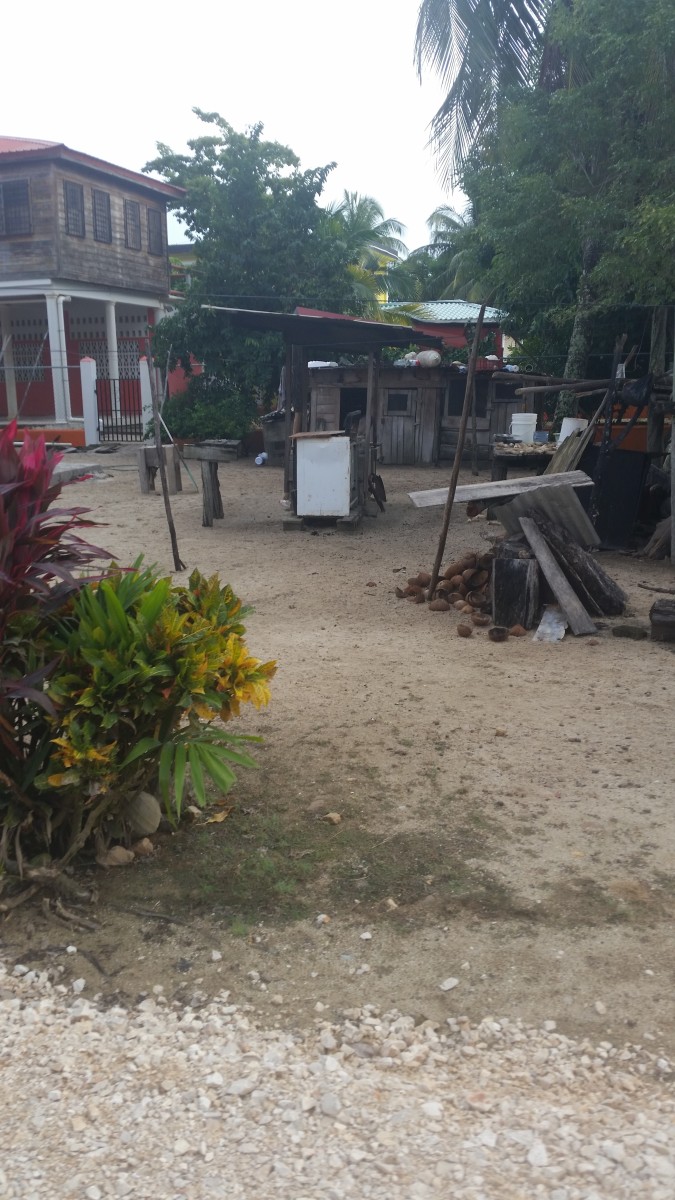Chichen Ixta - Yucatan, Mexico
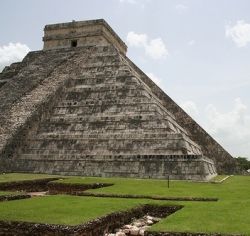
The Mayan Ruins of Mexico
We had the pleasure of visiting one of the "Seven Man Made Wonders of the World", Chichen Ixta. This trip was very special to us as it was our 30th wedding anniversary and one of the dreams on My Bucket List.
Chichen Ixta is the Mayan ruins located on the Yucatan Pennisula of Mexico.
Learn about the mysteries of Chichen Ixta - The Mayan Ruins
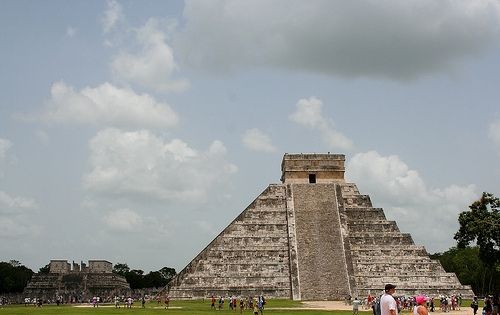
Our tour guide was of Mayan descent and helped show us the beauty and mystery of Chichen Ixta. We also learned about the Mayan Calendar and what will happen in 2012 according to the Mayan beliefs.
Come with me as I take you with me in a photo journal of a tour of Chichen Ixta, the Mayan Ruins.
The Serpent
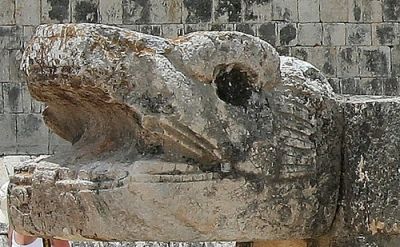
A view from my window seat of Mexico
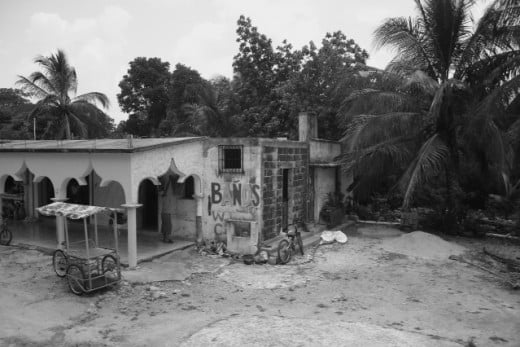
As we left the rich resorts of the hotel district in Cancun and started the two and a half hour drive to the Mayan Ruins called Chichen Ixta (pronounced "cheecha neesta" according to our Mayan guide) from my window seat I caught glimpses of the Mexican culture and life.
The above photo just seemed to take me back in time, to a simpler place.. A bicycle and a hand cart stood in front of what was once a very ornately designed building. The building needing repairs but looked very much like it is still home to the bicycle owner, a place of comfort and rest.
Mayan Church
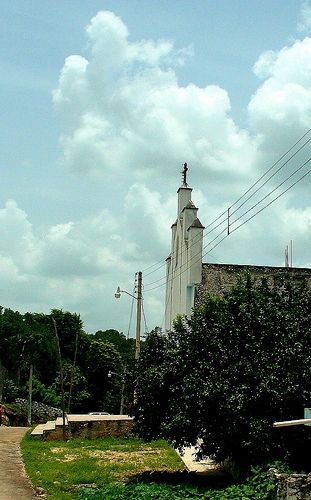
We passed the above church, the steeple standing tall against the blue sky and the photo below of a cemetery with ornately decorated toombs and graves. I believe the culture of this part of Mexico from my glimpses to be a very religious people.
Mayan cemetery
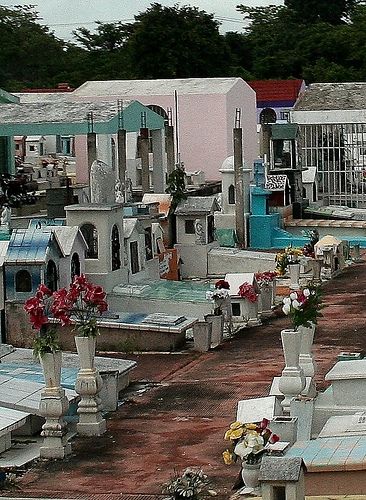
The graves though the cemetery was old, still had flowers and gifts for the honored ones who have passed from this world into the next. May they rest in peace.
Entering Chichen Izta - El Castillo or The Castle
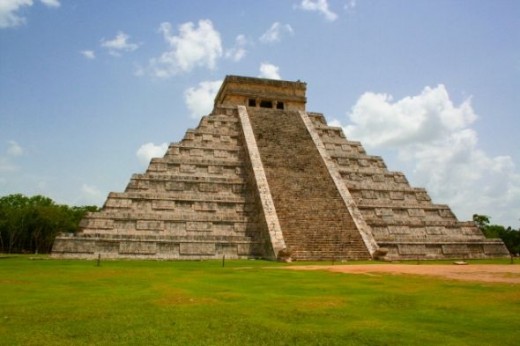
As you enter the gates of Chichen Izta you see the most well known of all the Mayan ruins, it is a huge Pyramid that stands in the center of a large grassy area. It is "El Castillo" also known as "The Castle". They also call this Pyramid ""The Kulcatan with means "feathered serpent".
Incredibly, when you stand directly in front of the top photo as a group and clap once, you will hear the echo of an Eagle back. We had to do it several times just to prove to ourselves that something else wasn't making the Eagle noise, it definitely was in response to our group clap.
This is the view as you enter the park.
The pyramid is 90 feet tall and 180 feet on a side, and it was built with nine succeeding platforms with four staircases. The stairs that run from the bottom t the top have railings with carved feathered serpents, the open-mouthed head of the serpent at the bottom and the tail with a rattle held high at the top.
The back of the Myan Pyramid
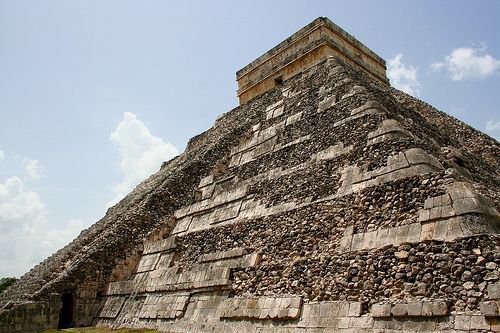
In this photo you can see how they are excavating the back side of the Pyramid. Our Mayan Guide told us that the Castle is only the top layer, they believe there is a whole layer of buildings below.
A close up of the beginning of the excavation of Chichen Izta. Photo © by Linda Hoxie, all rights reserved.
Information about the solar, Toltec, and Maya calendars is carefully built into el Castillo. Each stairway has exactly 91 steps, times four is 364 plus the top platform equals 365, the days in the solar calendar. The pyramid has 52 panels in the nine terraces; 52 is the number of years in the Toltec cycle. Each of the nine terraced steps are divided in two: 18 for the months in the yearly Maya calendar.
Here you can see the back side of the pyramid, and how the ruins looked before they were restored.
Though we were not there for it, it is told that during the autumnal and vernal equinoxes, the sun shining on the platform edges forms shadows on the balustrades of the north face that look like a writhing rattle snake.
Newly discovered Mayan Ruins below the ground, and the excavation has begun
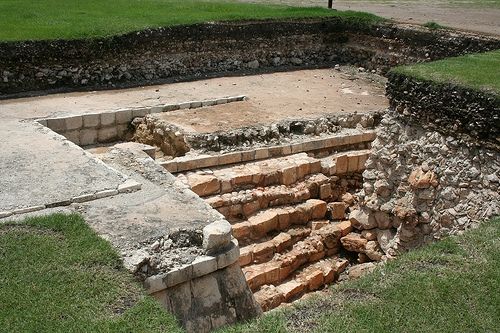
A close up of the beginning of the excavation of Chichen Izta.
The Mayan Ball Court
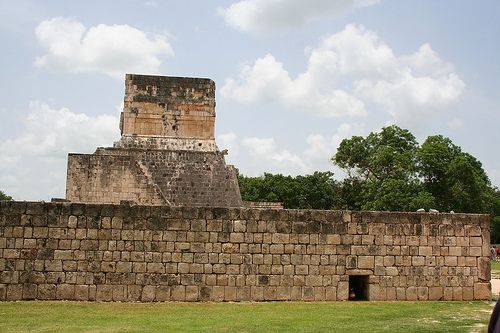
The Mayan ball court or Bull pen as our guide called it was really interesting.
(The outside of the Mayan Ball Court at Chichen Itza)
A close up of two of the hieroglyphics of the Mayan Ball Players at Chichen Itza
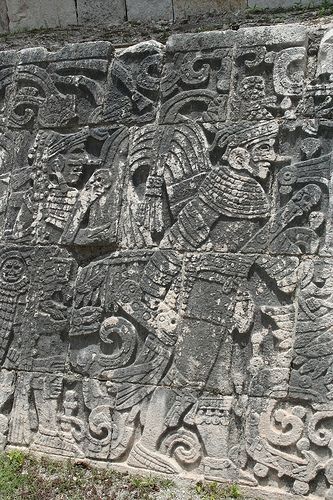
It was the first place we were able to get right up close to the carvings depicting the seven ball players on each team. The carvings are amazing, showing fine detail after thousands of years. You can see the elaborate headdress that each player wore, and even their shoes.
A close up of two of the hieroglyphics of the Mayan Ball Players at Chichen Itza)
The ball game we were told played an important ceremonial role in the Mayan society. It seems that it was played to the death.
A view of the Mayan Ball court - one wonders if the seven echos you hear may come from the way it seems to curve inward
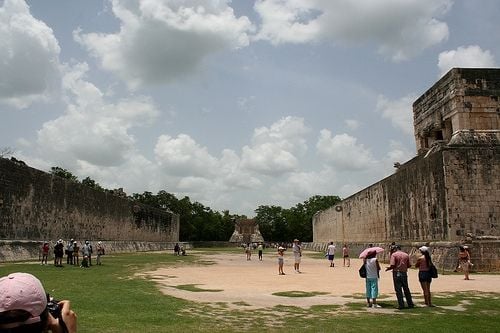
(A view of the Mayan Ball court, one wonders if the seven echos you hear may come from the way it seems to curve inward)
The acoustics are just incredible and a bit spooky. When you stand by the hoops in the middle and clap, the echo of a clap will sound seven times (Remember there were seven players on each team). It is said you can hear a whisper from one end to another, over 500 feet away.
Mayan Ball game
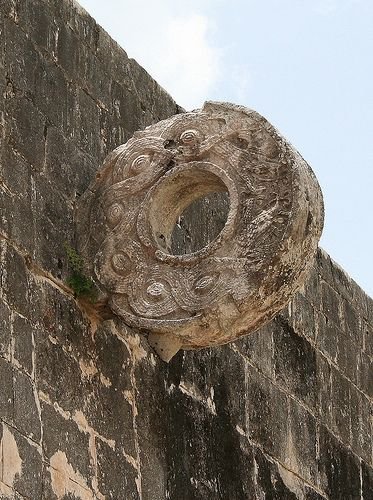
(A close up of the ring that is believed was a type of basket for the Mayan Ball game, they had to get the ball up an through that hoop)
Near the Ball Court, we saw the Lower Temple of the Jaguars, as you can see from the photos their jaguar etching in the stone have an eerie human like faces.
A close up of the jaguar's mouth
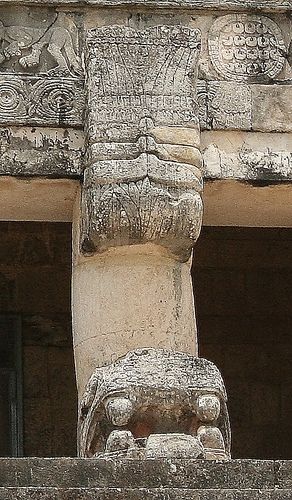
(A close up of the jaguar hieroglyphics on the Jaguars on the Lower Temple of the Jaguars at Chichen Itza)
It is told that "The sound waves are unaffected by wind direction or time of day/night. Archaeologists engaged in the reconstruction noted that the sound transmission became stronger and clearer as they proceeded. In 1931 Leopold Stokowski spent 4 days at the site to determine the acoustic principals that could be applied to an open-air concert theater he was designing. Stokowski failed to learn the secret. To this day it has not been explained."
(Quoted from: knowledgerush)
Tip:
If Visiting Chichen Ixta
Bring your own cold water and lots of it when you visit!
The Temple of the Skulls - Hieroglyphics of Human skulls carved into each stone
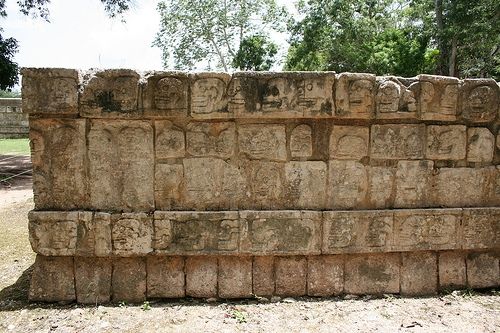
The Temple of the Skulls, covered with carvings of human skulls. This platform shaped structure is believed to have been used to display the heads of captured warriors and human sacrifices.
Our guide told us that their were remains of human skeletons found inside it.
The Serpents of Chichen Itza
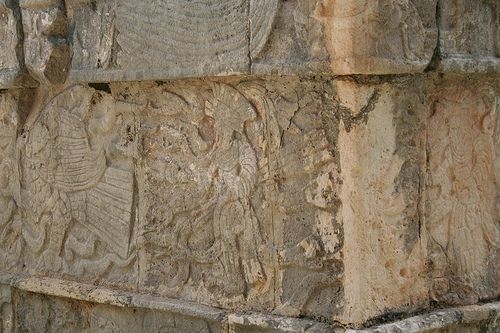
The Serpents reside all over the great city of Chichen Itza. There is one building that has carvings of a person with multiple arms that are serpents.
This serpents has rattles on it's tail
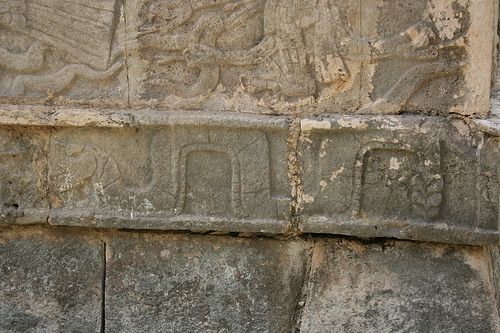
This serpents has rattles on it's tail
The Temple of the Warriors - with its famous Chac Mool statue by the Group of the Thousand Columns
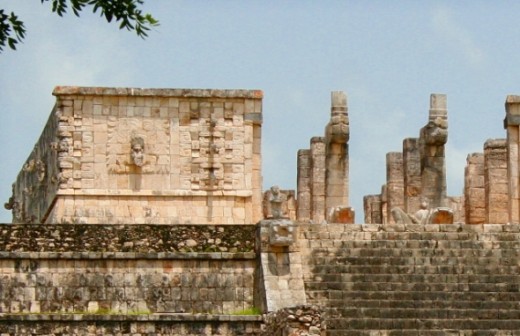
The Temple of the Warriors with a closer view of the famous Chac Mool statue
Here you can see part of the temple alongside the Group of the Thousand Columns
When you stand directly facing this temple from a distance, you can clap and listen to the unique echo from it. It sounded to me like a woman's shriek.
The Temple of the Warriors with a closer view of the famous Chac Mool statue
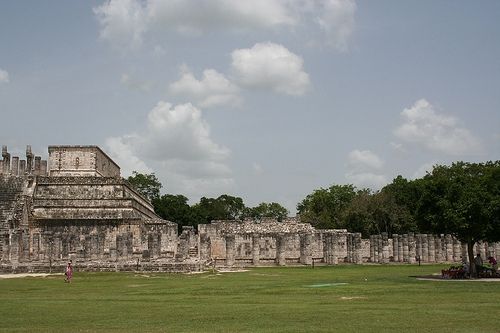
The Temple of the Warriors with a closer view of the famous Chac Mool statue
Here you can see part of the temple alongside the Group of the Thousand Columns
Here you can see part of the temple alongside the Group of the Thousand Columns
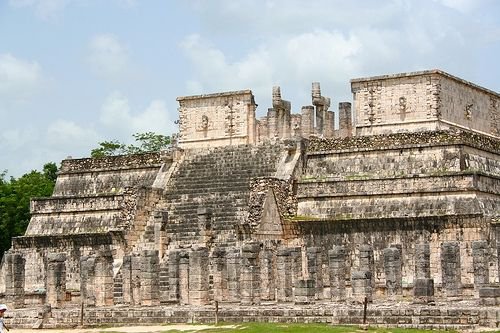
When you stand directly facing this temple from a distance, you can clap and listen to the unique echo from it. It sounded to me like a woman's shriek.
The Observatory at Chichen Itza - also called El Caracol
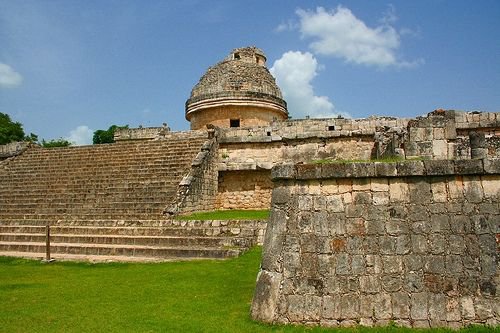
The Observatory, also called El Caracol.
The building is named after the Spanish word for conch, due to its interior winding staircase leading up to the top. They believe this building was actually used as; an Observatory, go figure! Stones could be removed from the dome, enabling the Mayans to better isolate and study the stars.
The Nunnery at Chichen Itza - (Casa de las Monjas)
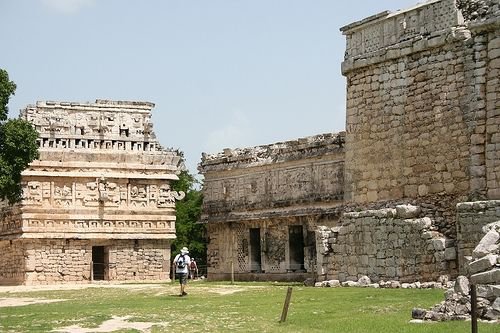
The Nunnery at Chichen Itza
The large sculptures on each corner have to do with the rain god Chac.
Akab-Dzib, which is believed to be the oldest building in Chichen Itza
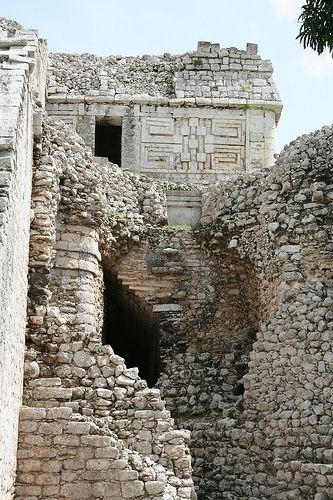
Next to the Nunnery is Akab-Dzib, which is believed to be the oldest building in Chichen Itza.
I hope you enjoyed your tour of Chichen Itza.
Please leave your carvings below so that I know who stopped by.
Linda
